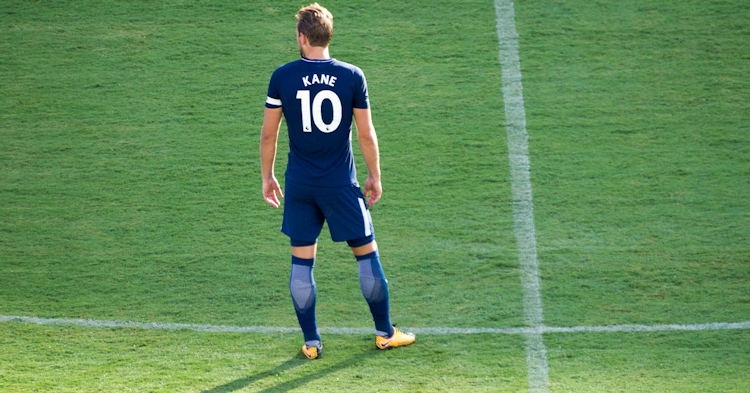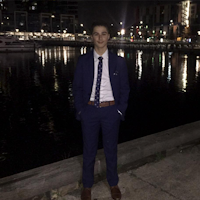Making Sense of Antonio Conte’s First Week As Tottenham Manager?
Last updated: Nov 11, 2021, 2:06AM | Published: Nov 11, 2021, 12:50AM
This image is a derivative of Harry Kane by Brad Tutterow (CC BY 2.0)
What do Nuno Espirito Santo, Jose Mourinho, Mauricio Pochettino and Antonio Conte all have in common? They all signed a contract at Spurs until 2023.
Last week, the brilliant Italian manager Antonio Conte became Tottenham’s most recent attempt to conjure the kind of football Spurs once wielded under Pochettino and which took them all the way to the 2019 Champions League final against Liverpool.
Unfortunately, since Pochettino departed North London, Tottenham have been decidedly mediocre displaying bland and uninspiring football while extending their agonising trophy-less run to 13 years.
Enter Antonio Conte who is the master of collecting trophies, winning the league at the last three clubs he’s managed (Inter, Chelsea and Juventus) while also taking a rather substandard Italian national team all the way to the quarterfinals of Euro 2016.
Last week we got our first glimpse of what he’ll bring to Tottenham with Spurs racing out to a 3-0 lead in their Conference League encounter against Vitesse. It was however in his second game in charge days later in the EPL against Everton where the footballing public was re-introduced to the master tactician.
Let’s take a look at some of the tactical changes Conte has introduced and see how Spurs have already drifted from the abysmal Nuno reign.
RELATED: Why Antonio Conte Was The Perfect Appointment For Spurs
Tactically Unrecognisable
Despite dropping points to an undermanned Everton, Spurs were unrecognisable from their horror performance against United the week prior.
It's staggering how a change of manager can allow for this drastic performance improvement even if Tottenham didn’t produce a singe shot on goal and only walked away with a point.
It all started with the formation and personal Conte sent out. The Italian went with a 3-4-3 which used Eric Dier as the inside centre-back with Cristian Romero and Ben Davies on either side.
In midfield he went with an Oliver Skipp-Pierre-Emile Hojberg double pivot and which deployed Sergio Reguilón and Emerson Royal as wingbacks. Up front he used the English captain Harry Kane with Heung-Min Son and Lucas Moura either side for him.
In possession, it was a traditional Conte game style. The double-pivot in midfield stayed deep and tight together, allowing for quick, interchangeable passing triangles to help with the initial stages of build-up play. This allowed both wingbacks to have their starting position to be relatively wide, maintaining width and stretching the pitch, opening gaps in the defence.
These gaps were capitalised on by Son and Moura who cut inside, occupying the half-space and staying close to Kane upfront, who, unlike under Nuno, very rarely dropped deep. Instead, Kane was pushing up on the last line and maintaining the squad’s depth up the pitch. This is done to create overloads in the central area, looking to overwhelm the opposition centre-halves.
On the occasions when Spurs progressed the ball quickly up the pitch, the outside centre backs would often push up to join the attack, creating underlapping runs which coincided with the wingbacks, or Son/Moura, pushing wide to maintain width.
Another facet of Spurs patient build-up play was that Dier would sometimes step forward into the midfield and create a midfield 3 with Romero and Davies tucking behind him. The key facet of Spurs final third play was by getting the ball wide and cutting it across, helped by the presence of Kane, Son and Moura being able to move and interchange positions quickly.
Without the ball, Spurs played a solid game which resulted in 345 completed passes, just 2 shots on goal and a clean sheet. Against Everton they didn’t allow much space in central areas and pressed efficiently. Spurs dropped into a 5-4-1 out of possession, with Kane pressing the two centre-backs while Moura and Son pressed the full-backs. The midfield pivot meanwhile routinely cut off Everton passing lanes.
Spurs displayed very effective counter-pressing, looking to get the ball back rapidly once dispossessed, thus creating potential counter-attacking opportunities should they win the ball back.
RELATED: Why Eddie Howe And Newcastle United Are A Perfect Match
Where were they susceptible?
This isn’t a perfect system, and Spurs obviously haven’t been able to realise Conte’s vision just yet so there were some areas of the game where Everton were able to get at Spurs.
Firstly, the Toffees were able to disrupt Spurs’ compact defensive structure by quick, intricate movement in between the lines.
By using the likes of Andros Townsend and Richarlison, Everton were able to drag players out of position and create gaps to exploit. The other area in which Spurs were tested was through long balls. The back three that Conte selected aren’t the quickest collective of players, so Richarlison was able to get beyond the backline multiple times and create chances. The most contentious decision of the game - Richarlison’s penalty being overturned - came from a long ball that split the defence apart and where Tottenham’s defenders simply couldn’t keep up.
The way that Spurs can prevent this from occurring again is by either dropping the defensive line a few yards, allowing the likes of Dier and Romero to use their height and contest aerial contests. Or, by being slightly more chaotic with their pressing and not allowing the ball to get over the top, stopping the pass at its source.
Regarding the intricate passing issue, that will be eradicated over time once the players are more disciplined and versed in Conte's system.
RELATED: Outfoxed- What's Behind Leicester City's Leaky Start To The Season?
Is this sustainable?
Antonio Conte has a history of turning very average sides into world-beaters within a matter of months. He’s very strict with his system, and after already having a successful spell in England with Chelsea, he'd be fully cognisant of what does and doesn't work against EPL opposition.
Conte is one of the world's very best managers at extracting the best out of not so good players, but with that said, don’t expect Oliver Skipp to be marshalling the midfield for England in the World Cup next year. Even if his players don’t warm to his system immediately, Conte's such a brilliant man-manager his troops will perform better than what history perhaps says they should.
While Conte doesn’t have all the players at his disposal to challenge with the big boys just yet, by all accounts he has the funds to turn that current shortcoming into a reality. Only time will tell whether he can fashion Spurs into a powerhouse, yet on first impressions, all signs point to an appointment which was as brilliant as it was fortuitous.
Did you enjoy this article? Join our free mailing list to get the best content delivered straight to your inbox, or join the conversation by leaving a comment below or on the Stats Insider Twitter or Facebook page.



